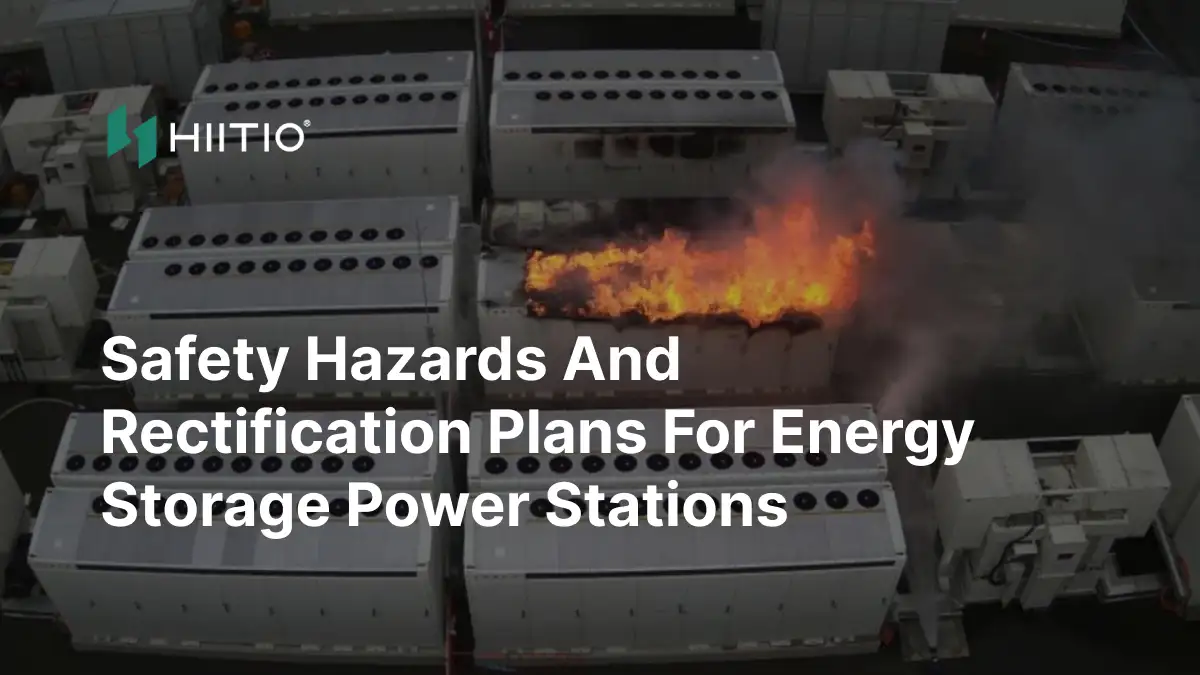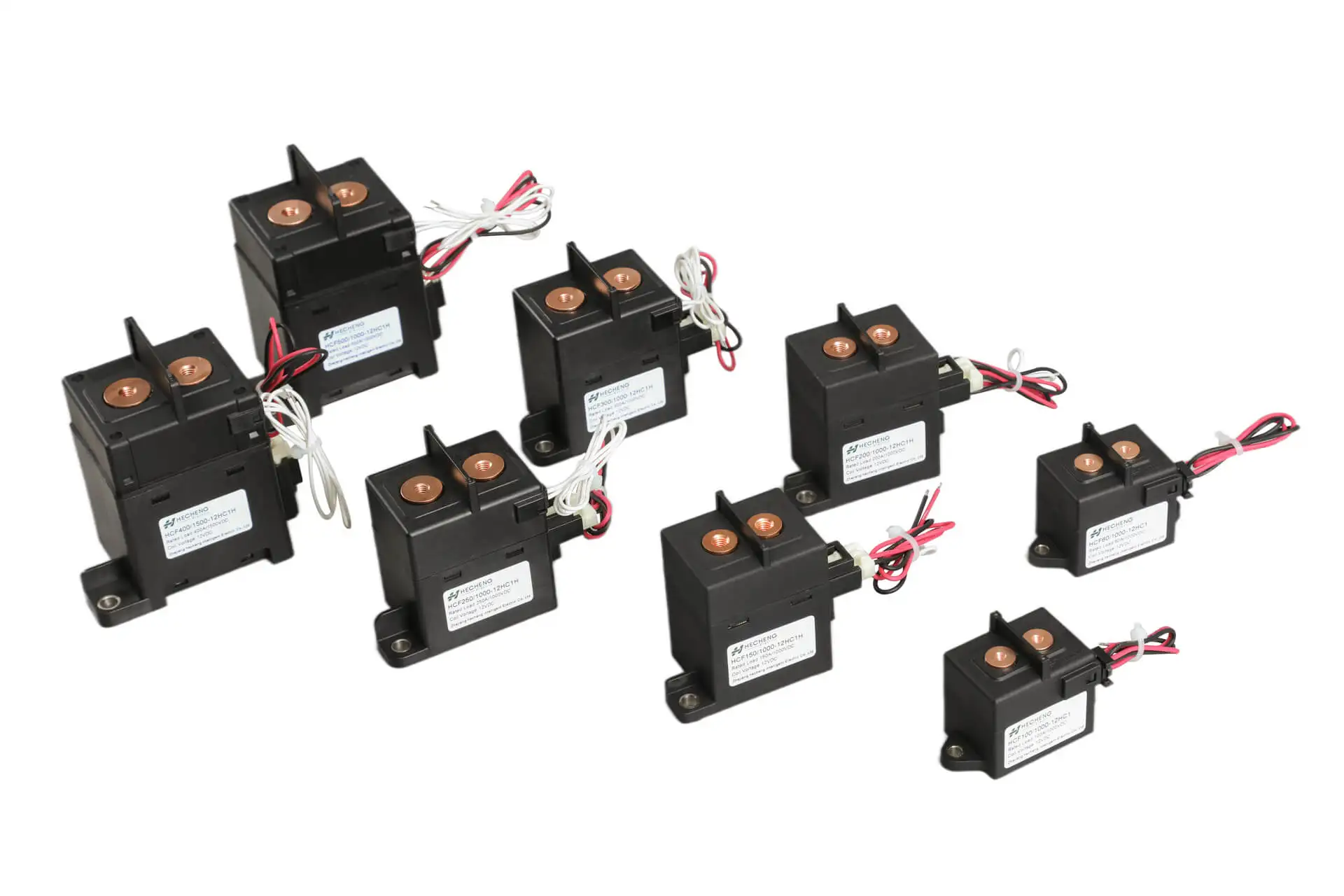Electrochemical energy storage is an emerging product with no mature experience to draw from. When the voltage level increases to 110KV, the possibility and danger of accidents also increase significantly.
Energy storage safety hazards are still the primary factor restricting development.
There are approximately 7,000+ energy storage power stations in the world. According to public reports, more than 70 energy storage safety accidents have occurred since 2018, with a safety failure rate of approximately 1.52%. Accidents may occur during installation, debugging, and operation.
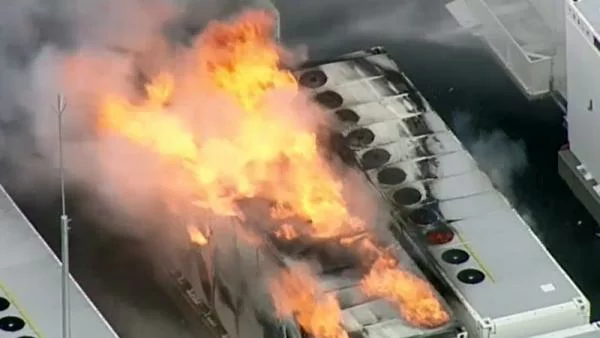
Tesla’s lithium-ion megapack causes three-day fire during test at Australian 300MW ESS
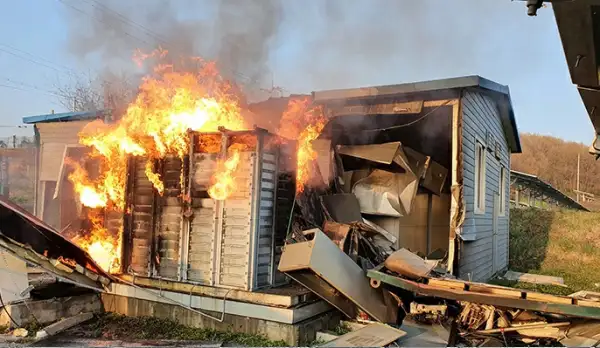
Fire at Solar Plant in Hongseong Involves EV Batteries from LG Energy Solution
Problems with energy storage power stations
There is insufficient experience in the full life cycle management of large-scale lithium-ion energy storage power stations.
- Choosing the right equipment is not easy
- Building good energy storage is not easy
- It’s not easy to make good use of a power station
The energy storage system has a high failure rate, poor operation consistency, and cannot guarantee safety and economy.
Thermal Runaway Behavior of Lithium-Ion Battery Cell
Mechanism of Safety Issues in Lithium-Ion Batteries – Battery Cell:
The decomposition of the SEI (Solid Electrolyte Interface) membrane, leading to a significant exothermic decomposition of the electrolyte on the electrode surface, is the fundamental cause of battery temperature rise and subsequent thermal runaway.
Gas Emissions during Combustion:
Main Components: Carbon Monoxide, Carbon Dioxide, Hydrogen
Other Components: Methane, Ethane, Propane, Isobutane, Butane, Isopentane, Hexane, Ethylene, Propylene, Benzene, Toluene, Benzyl, etc.
Many of these are combustible gases. During firefighting, attention should be paid to sealing and controlling the possibility of explosions that may occur when suddenly opened. Some are toxic, so firefighters need to enhance their protection.
Principle display:
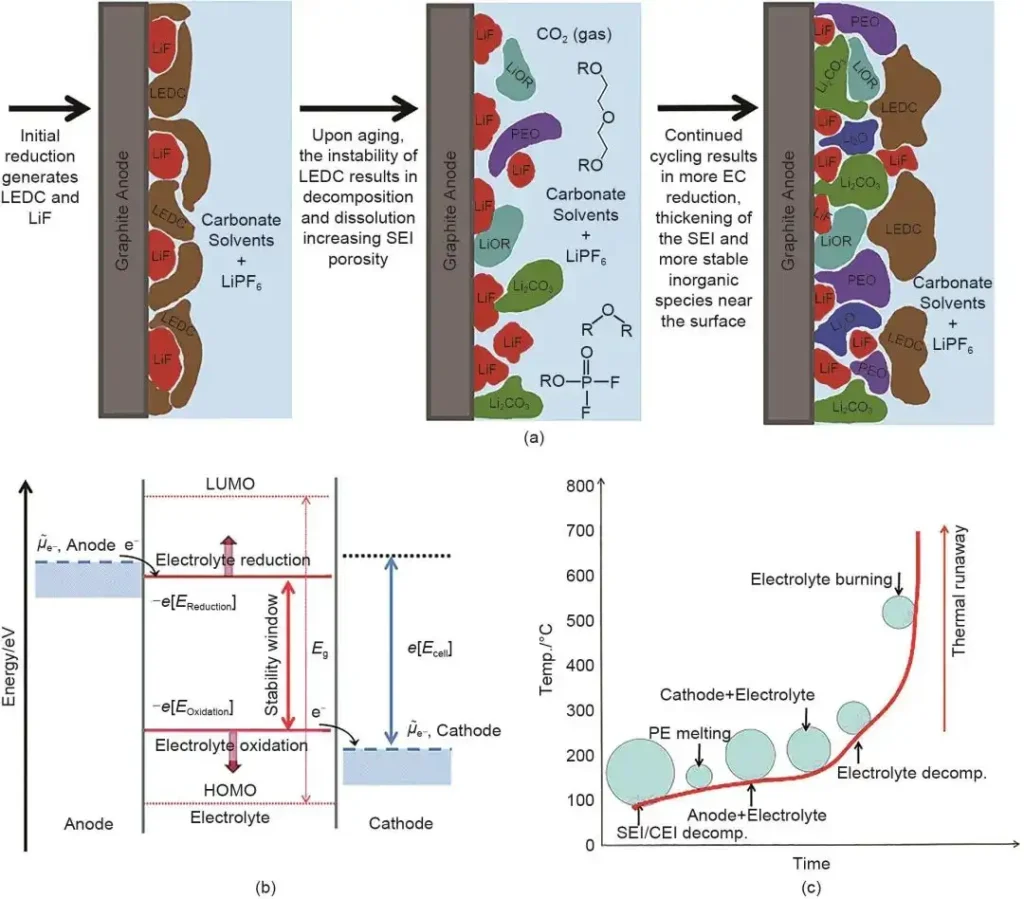
Figure 1:
(a) Schematic diagram of SEI membrane formation on the graphite negative electrode;
(b) Thermodynamics of SEI membrane formation on positive and negative electrodes, where μe-, Anode and μe-, Cathode represent the electrochemical potentials of the negative and positive electrodes, respectively. The stable window of the electrolyte is the energy difference between LUMO and HOMO, denoted as Eg;
(c) Qualitative description of the chain reaction during the thermal runaway process.
Accident analysis:
Tesla’s Victorian Big Battery Energy Storage Project in Australia
Cause of the Accident:
Immediate Cause: Leakage of the liquid cooling system of the MP-1 battery storage unit led to arcing within the battery module, resulting in thermal runaway of the lithium-ion battery, followed by a fire outbreak and spreading.
Contributing Factors:
MP-1 was not commissioned for online testing that day, rendering remote data monitoring impossible. Additionally, the telemetry system, fault monitoring, and electrical safety equipment were disabled or operating with limited functionality due to the use of a key-lock switch.
Fueled by wind speed, the fire spread from MP-1 to MP-2. As the top layer was made of plastic material, the fire penetrated the MP-2 through the top layer’s relief valve, triggering thermal runaway and subsequent spreading within MP-2.
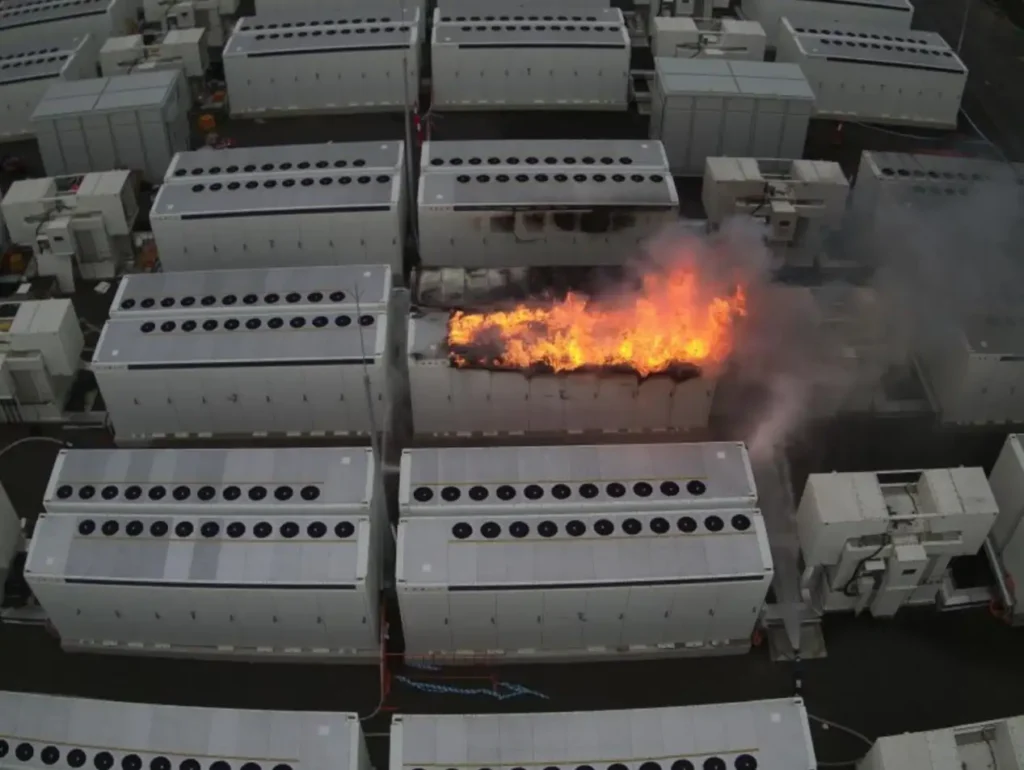
Discover hidden dangers and rectify them
Rectification of hidden dangers: The battery-prefabricated cabin is not equipped with an explosion-proof ventilation system
Hidden Hazard 1:
Fire protection facilities are not configured and operating normally as required.
Each battery cabinet must be equipped with a fire protection system, which consists of two explosion-proof fans. The exhaust volume of the two fans together for one minute is not less than the volume of the container.
Explosion-proof ventilation systems are a necessary requirement for the design of energy storage cabinets. They are used to exhaust combustible gases such as hydrogen and carbon monoxide generated during battery storage processes, preventing the accumulation of gases that could lead to explosions or harm to personnel. Typically, these ventilation systems consist of intake and exhaust vents and are linked with fire monitoring systems.
Hidden Hazard 2:
The cable duct connecting the lithium battery equipment compartment to the outside world lacks proper fire sealing or is inadequately sealed.
Additionally, the fire separation distance within the energy storage station buildings does not meet the relevant technical standards.
Rectification Plan:
- The openings in pipelines and cable ducts should be tightly sealed with fireproof sealing materials that comply with the GB23864 standard.
- When the fire separation distance is inadequate, firewalls should be installed. The length and height of the firewalls should exceed the outline of the prefabricated compartments by 1 meter each.
Hidden Hazard 3:
The lithium battery equipment compartment lacks temperature, smoke, and combustible gas detection devices, or the combustible gas detection device fails to trigger the compartment-level and cluster-level fuses, fails to activate the ventilation system or malfunctions.
Solution: Combustible gas detectors can be used to detect hydrogen, carbon monoxide, and VOC concentrations in the lithium-ion battery room.
Based on multi-level alarm logic, they can control the ventilation system, energy storage system, and fire-fighting equipment in a linked manner to prevent the accumulation of flammable and explosive gases and prevent fire and explosion accidents.
According to the fire system circuit diagram, combustible gas detectors can be installed in parallel with the temperature and smoke detection circuits and send signals to the fire system to achieve this function.
Hidden Hazard 4:
Leakage of lithium battery electrolyte or heating of its connecting wires. The temperature collection points of the battery in the electrochemical energy storage device of the substation are not distributed according to the single-cell level, and the battery management system lacks protection temperature and temperature rise rate monitoring functions.
Rectification Plan:
The temperature collection points inside the battery modules at the construction and operation stations are less than half of the number of individual cells. Rectification requires all battery modules and battery management systems to be returned to the factory for re-production. It is recommended that this requirement be included in the acceptance criteria for newly constructed electrochemical energy storage devices.
For the protection of temperature and temperature rise rate monitoring, some manufacturers can achieve this through software upgrades.
Hidden Hazard 5:
Lithium battery equipment is installed in densely populated areas, inside buildings where people live or work, or in other confined spaces, placed on building rooftops where firefighting and rescue operations are not feasible or located adjacent to flammable and explosive materials storage areas.
Rectification Plan:
When the fire separation distance is inadequate, firewalls should be installed. The length and height of the firewalls should exceed the outline of the prefabricated compartments by 1 meter each.
If it’s impossible to install firewalls or conduct rescues, consideration may be given to suspending operations.
Hidden Hazard 6:
The battery system circuit is not equipped with DC circuit breakers, isolation switches, and other breaking and protection equipment, and the battery cluster is not equipped with cluster-level circuit breakers (or contactors, relays)
Rectification Plan:
Add DC circuit breakers, isolation switches, and other breaking and protection equipment as required, and add cluster-level circuit breakers (or contactors, relays) to battery clusters.
Hidden Hazard 7:
The battery management system (BMS) has not obtained a type test report issued by a unit with CMA/CNAS testing qualifications, or the type test report is inconsistent with the specifications and models identified on the product nameplate.
Rectification Plan:
If the type test report is inconsistent with the on-site product model, the corresponding product type test report should be supplemented. If there is no type of test report, the power industry should have national-level CMA and CNAS energy storage qualification testing agencies to test and issue a report.
Hidden Hazard 8:
The battery management system lacks protection functions such as overvoltage, undervoltage, overcurrent, insulation, and over-temperature, or these functions are malfunctioning. It may also fail to issue graded alarm signals or trip commands.
Rectification Plan:
Targeted hardware replacement or software upgrades should be implemented to address these issues.
Hidden Hazard 9:
The switching equipment at the grid-connected point of the energy storage power station has no obvious switching points.
Rectification plan:
Targeted transformation and upgrading of grid connection points
Hidden Hazard 10:
The battery has not obtained a valid type test report and random inspection report for the energy storage battery, or the power battery used in the echelon has not carried out performance testing and safety and quality special assessment.
Rectification plan:
Type tests and random inspections should be conducted by inspection agencies with national CMA and CNAS energy storage testing qualifications in the power industry and issue reports.
Hidden Hazard 11:
The operation and maintenance management unit fails to evaluate the operation indicators of energy storage power stations at least once a year, propose operational safety control measures and supervise their implementation.
Rectification program:
The operation and maintenance management unit is required to conduct an evaluation of the operation indicators of the energy storage power station at least once a year, propose targeted operation safety management and control measures, and implement them.
Hidden Hazard 12:
The energy storage power station has no operating procedures, emergency plans and on-site disposal plans.
Rectification plan:
Ask the management unit to supplement and improve operating procedures, emergency plans and on-site disposal plans
Hidden Hazard 13:
The energy storage power station invested by the company has not been approved for project approval.
Rectification plan:
The local energy authorities should obtain new energy storage project registration and management certification documents
Hidden Hazard 14:
The energy storage power station project invested by the company system has not been reviewed and accepted (or filed) by fire protection
Rectification plan:
Communicate and file with the local housing and construction department or relevant authorities, or ask a professional fire safety assessment agency to issue an energy storage safety assessment report, and promote the inclusion of energy storage devices in substations under the control of key fire protection units.
Summary:
The energy storage battery cabinet is not a simple product with a low threshold. In addition to the price that most people are concerned about, quality and safety are actually the most important parts. Once a safety accident occurs, it will not only cause economic losses but also may cause Casualties (endless lawsuits) and great damage to the company image.
HIITIO is a company that started out as a manufacturer of relays, circuit breakers, Fuse and other electrical components. We are much more professional than most manufacturers in terms of protection and safety.
In addition, we strictly comply with every fire protection requirement and complete ventilation design to ensure the maximum safety of our users.


